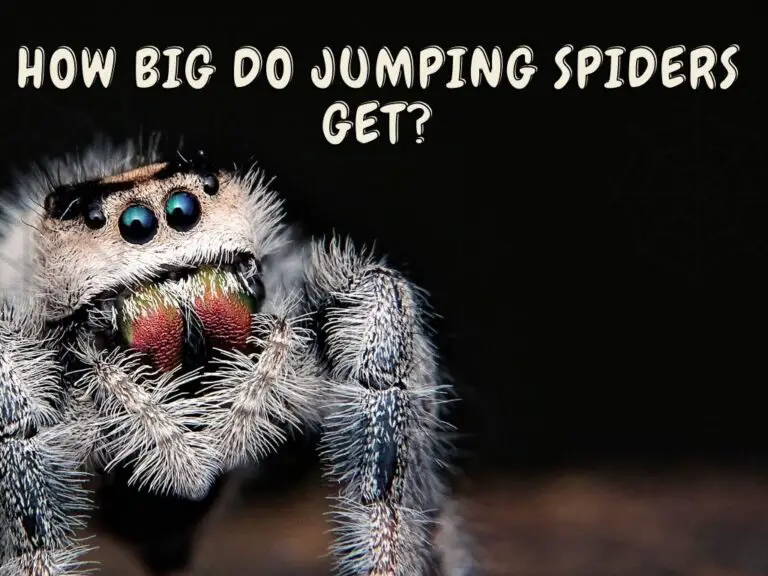A fully grown jumping spider measures about 1/8-3/4” 4mm-18mm. Jumping spiders are mistaken for other types of spiders such as the black widow because they have compact bodies and different colors like grey, brown or tan combined with green, blue, yellow or red markings that could be easily confused with other spiders.
The body can be as long as 0.98 inches depending on the species. The largest jumping spider is Hyllus giganteus, and other relatively big species include the heavy jumper spider, plexippus, phidippus and philaeus. One thing that all jumping spiders have in common is thick front legs.
Jumping spiders have the best vision, and no other spider species has such ability. The spiders can sense and take action against a movement that is up to 45 cm away from them. They are unique and do use the common webs to trap their prey. Instead, they target prey from a distant and pounce it without making a mistake.
Their excellent eyesight enables them to hunt effortlessly; the middle pair of eyes can see straight ahead of them, giving these spiders a brilliant resolution and color vision.
Jumping spiders walk around a lot and are not to their areas where their nests are.
Jumping spiders make great pets because they have a good memory, which also helps find their way back to the nest at the end of the day. They spend most of their day time hunting, especially where there is sunshine.
Their hopping ability makes them excellent hunters. But at night they can’t hunt for food because their eyesight becomes poor.
As the jumping spiders age, they have problems jumping or climbing. They live from between six months and three years. These spiders lay eggs and continue living with their little ones until they are about 20 days old when they can start hunting. Female jumping spiders shed their exoskeleton to get a spiderling. It takes up to 4 weeks to hatch the babies, and during this time, the mother spider doesn’t move or eat.
It is rare to find jumping spiders inside a house because they prefer outdoor spaces where a lot of sunshine and vegetation to hunt their prey. This is where they can find flea hoppers, mosquitoes, bollworms, webworms, stinkbugs and leafhoppers.
Though jumping spiders do use snare webs, they web retreats which look like a sac made of several covers. This is where they lay eggs, molt and hibernate during the night. The eggs are kept in a hammock-like area, and they may have different retreats for various activities. This gives the females ample space to hatch their eggs and raise their young ones.
Frequently Asked Questions
How far is jumping spider able to jump?
A jumping spider jumps between 10 and 50 times the size of its body length. This spider is also referred to as “daring jumping spider” and famous for long leaps.
Do jumping spiders poop?
Spiders are structured to get rid of waste via a single opening. This means that urine and poop are excreted via the same path. They do not really poop, but they release a combined waste product, exiting via the anus.
Is a jumping spider smart?
A jumping spider has a brain as small as a sesame seed, making the spiders sound lightweight mentally. However, looking at how they hunt, they are smarter than most big animals.




